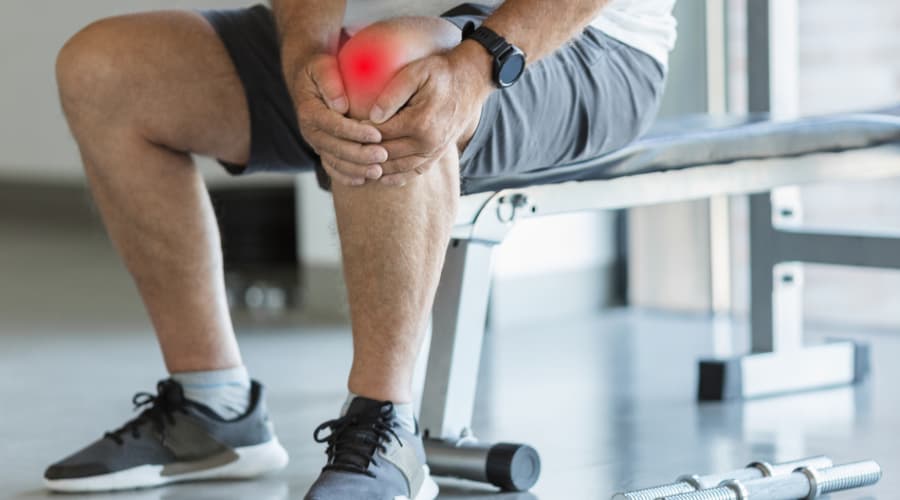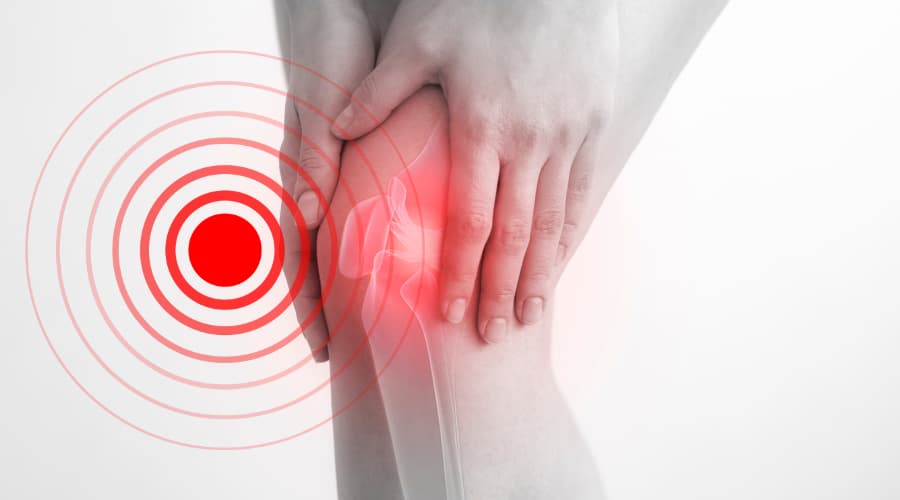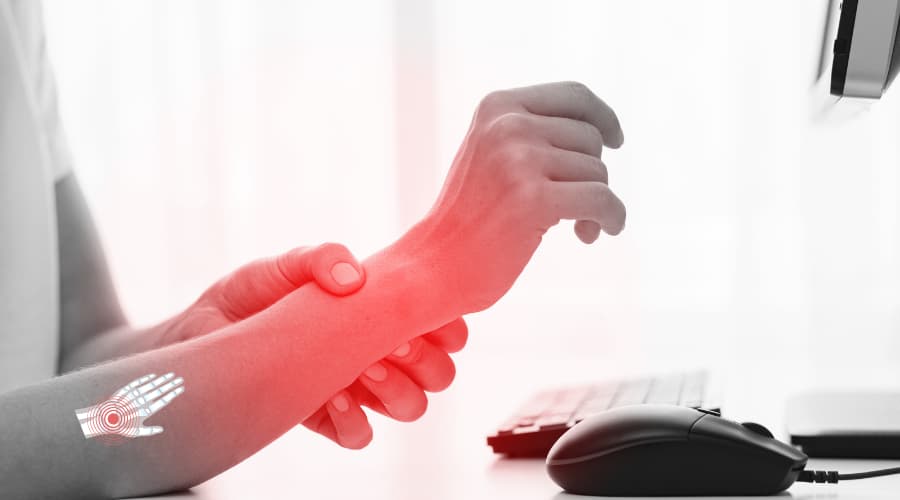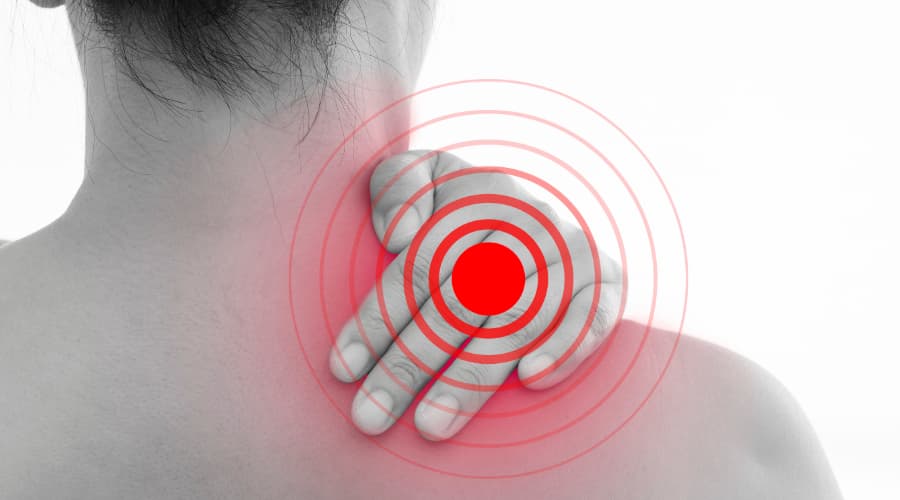Back pain is one of the most common issues affecting people worldwide. It is estimated that up to 80% of adults will experience back pain at some point in their lives, making it a significant public health concern. The pain can range from a mild, short-term inconvenience to a severe, chronic condition that significantly impacts quality of life.
Understanding the underlying causes of back pain is crucial for effective management and prevention. Back pain can result from various factors, including muscle or ligament strains, disc degeneration, poor posture, and traumatic injuries. Identifying the specific cause of back pain can help tailor the most appropriate treatment plan and prevent future episodes.
At Vale Health Clinic, we specialise in comprehensive back pain management. Our team of experienced chiropractors is dedicated to diagnosing and treating the root causes of back pain. We employ a holistic approach, combining advanced diagnostic tools with personalised treatment plans to ensure our patients receive the highest standard of care. Whether you are experiencing acute back pain or a chronic condition, Vale Health Clinic is here to help you achieve lasting relief and improved spinal health.
Back Pain
Back pain is a prevalent condition that affects people of all ages. It can manifest as discomfort or pain in the upper, middle, or lower regions of the back, and it is one of the most common reasons people seek medical care or miss work. Back pain can be classified into two main types: acute and chronic. Acute back pain typically arises suddenly, often due to an injury or a specific incident like lifting a heavy object incorrectly. It usually lasts a short duration, frequently resolving within a few days to a few weeks with proper care. Chronic back pain, on the other hand, persists for three months or longer and may be continuous or intermittent. This type of pain often requires a more comprehensive treatment approach and can significantly impact an individual’s quality of life.
Anatomy of the Spine
The spine, or vertebral column, is a complex structure composed of 33 vertebrae, intervertebral discs, muscles, and ligaments, all working together to support the body’s weight and facilitate movement. The vertebrae are the bony segments of the spine, which are divided into three main regions: cervical (neck), thoracic (mid-back), and lumbar (lower back). These vertebrae are separated by intervertebral discs, which act as cushions or shock absorbers, preventing the bones from rubbing against each other and allowing flexibility.
Muscles and ligaments surrounding the spine provide additional support and stability. The muscles help with movement and maintaining posture, while the ligaments connect the vertebrae and help stabilise the spine. These components create a robust, flexible structure capable of withstanding considerable stress and strain.
Maintaining spine health is crucial for overall well-being. A healthy spine allows for a wide range of motion and supports daily activities without pain. When any part of the spine is compromised, it can lead to discomfort, reduced mobility, and other health issues.
Causes of Back Pain
Back pain often stems from issues with the muscles, ligaments, discs, or bones in the spine. One of the most frequent causes is muscle or ligament strain. This can occur when lifting heavy objects improperly, making sudden awkward movements, or overexerting the back muscles during physical activity. These strains can lead to painful inflammation and muscle spasms.
Disc degeneration and herniation are also familiar sources of back pain. As we age, the intervertebral discs that cushion the vertebrae can wear down, leading to disc degeneration. This degeneration can cause the discs to lose their ability to absorb shocks, leading to pain and stiffness. Herniated discs, where the inner gel-like core of the disc pushes out through a tear in the outer layer, can press on nearby nerves and cause severe pain, numbness, or weakness in the back and legs.
Poor posture and ergonomic issues are significant contributors to back pain. Sitting or standing improperly for prolonged periods, such as slumping over a desk or hunching over a phone, places additional stress on the spine. Ergonomic problems, like an improperly set up workspace, can exacerbate this strain, leading to chronic discomfort.
Traumatic injuries, such as those from falls, car accidents, or sports, can cause immediate and severe back pain. These injuries might result in fractures, dislocations, or damage to the spinal cord, necessitating immediate medical attention.
Less Common Causes
While less common, some conditions can also lead to back pain. Spinal stenosis, a narrowing of the spaces within the spine, can pressure the nerves travelling through the spine, resulting in pain, numbness, or muscle weakness, especially in the legs.
Sciatica is another less common cause of back pain. It is characterised by pain that radiates from the lower back down through the legs. This condition is usually caused by compression or sciatic nerve irritation, often due to a herniated disc or bone spur.
Though rare, infections and tumours can be serious causes of back pain. Infections in the spine, such as osteomyelitis or discitis, can cause severe pain, fever, and swelling. Tumors, whether benign or malignant, can grow in or around the spine, leading to pain and neurological symptoms as they press on nerves and other structures.
Symptoms of Back Pain
Back pain can manifest in various ways, depending on the underlying cause and the specific structures involved. The types of pain experienced can vary significantly. Some people may feel a sharp, stabbing pain, while others might experience a dull, aching sensation. Radiating pain is also common, where the discomfort spreads from the back to other areas, such as the legs or buttocks, often due to nerve involvement.
The location of the pain can also provide clues about its origin. Pain in the upper back may be associated with issues in the cervical spine or shoulder muscles, while pain in the middle back often relates to problems with the thoracic spine or surrounding muscles. Lower back pain, the most common, typically involves the lumbar spine, discs, or lower back muscles.
Associated symptoms can further help identify the cause of back pain. Numbness, tingling, or weakness in the extremities can indicate nerve compression or damage. These symptoms are often seen with conditions like sciatica or herniated discs, where the nerve pathways are affected.
Medical Help
Recognising when to seek medical help for back pain is crucial for preventing further complications and ensuring effective treatment. Specific symptoms may indicate more severe conditions that require prompt medical attention. If back pain is accompanied by a high fever, sudden weight loss, or severe abdominal pain, it could be a sign of an underlying infection or other serious health issue.
Neurological symptoms such as significant numbness, tingling, or weakness, mainly if they occur suddenly or worsen rapidly, are red flags. These signs suggest possible nerve damage or compression, which might need immediate intervention to prevent long-term disability.
Loss of bladder or bowel control is another urgent symptom that requires immediate medical evaluation. This can be a sign of cauda equina syndrome, a rare but severe condition where the bundle of nerves at the lower end of the spinal cord is compressed. This syndrome is a medical emergency and needs rapid treatment to prevent permanent damage.
Risk Factors
Lifestyle and Occupational Risk Factors
A sedentary lifestyle is one of the primary risk factors for developing back pain. Prolonged periods of inactivity, such as sitting for extended hours at a desk or in front of a screen, can lead to weakened muscles and poor posture, contributing to back pain. Regular physical activity is essential for maintaining muscle strength and flexibility, which are crucial for supporting the spine and preventing pain.
Heavy lifting and repetitive motions, often associated with certain occupations, can also significantly increase the risk of back pain. Jobs that require manual labour, such as construction, warehouse work, or caregiving, often involve lifting heavy objects or performing repetitive tasks that strain the back muscles and spine. Proper lifting techniques and regular breaks to avoid repetitive strain are important measures to mitigate this risk.
Poor posture and ergonomics play a critical role in developing back pain. Sitting or standing with improper posture stresses the spine and surrounding muscles. For example, slouching in a chair or hunching over a computer can lead to muscle fatigue and discomfort. Ensuring that workstations are ergonomically set up and maintaining good posture throughout the day can help reduce the likelihood of developing back pain.
Biological Risk Factors
Age is a significant biological risk factor for back pain. As people age, the wear and tear on the spine and its components, such as the intervertebral discs and facet joints, increase. This natural degeneration can lead to osteoarthritis and disc degeneration, which are common causes of back pain in older adults.
Genetic predisposition also plays a role in the likelihood of developing back pain. Some individuals may inherit a genetic tendency towards certain spinal conditions, such as herniated discs or degenerative disc disease. Understanding one’s family medical history can help identify and manage potential risk factors for back pain.
Previous injuries to the back are another important risk factor. A history of back injuries, whether from sports, accidents, or other causes, can make an individual more susceptible to future episodes of back pain. Injuries can lead to chronic issues such as scar tissue formation, weakened muscles, or compromised spinal structures, which can increase the risk of recurrent pain.
Diagnosis of Back Pain
The diagnosis of back pain begins with a comprehensive initial evaluation. This process typically starts with the collection of a detailed medical history. Patients are asked about the onset, duration, and characteristics of their pain and any activities that may exacerbate or alleviate it. Information about previous injuries, medical conditions, and lifestyle factors is also crucial in forming a complete picture.
Following the medical history, a physical examination is conducted. The healthcare provider assesses the patient’s posture, range of motion, and physical condition during this examination. They may also perform specific tests to evaluate the function of the spine, muscles, and nerves. This thorough initial evaluation is essential for identifying potential underlying causes of back pain and determining the most appropriate course of action.
Accurate diagnosis is critical in the management of back pain. Without understanding the exact cause of the pain, treatment may be less effective or even detrimental. An accurate diagnosis ensures that the chosen treatment targets the root cause of the pain rather than just addressing the symptoms. This approach provides relief and helps prevent future episodes of back pain.
Diagnostic Tests
In many cases, additional diagnostic tests are necessary to confirm the diagnosis or to gain more detailed information about the underlying condition. X-rays are often the first imaging test used. They can reveal issues with the spine’s bones, such as fractures, alignment problems, or arthritis. However, X-rays are limited in detecting issues with soft tissues like muscles, discs, or nerves.
MRI (Magnetic Resonance Imaging) and CT (Computed Tomography) scans are used for more detailed imaging. MRI scans are beneficial for visualising soft tissues, including intervertebral discs, spinal cord, and nerve roots. They can help identify herniated discs, spinal stenosis, or tumours. CT scans provide a more detailed view of the bone structures and are often used when an MRI is unsuitable.
In some cases, blood tests and nerve studies might be necessary. Blood tests can help identify infections, inflammatory conditions, or other systemic issues contributing to back pain. Nerve studies, such as electromyography (EMG) and nerve conduction studies, evaluate the electrical activity of muscles and the function of nerves. These tests are instrumental in diagnosing conditions like sciatica or peripheral neuropathy.
Treatment Options
For many suffering from back pain, non-surgical treatments provide effective relief and improve quality of life. Physical therapy is often the mainstay of non-surgical treatment. A physical therapist can design a customised exercise program to strengthen the muscles supporting the spine, improve flexibility, and enhance posture. These exercises help reduce pain and prevent future episodes by promoting spinal health.
Chiropractic care is another valuable non-surgical treatment option. Chiropractors specialise in diagnosing and treating musculoskeletal disorders, particularly those related to the spine. Through spinal manipulation and other hands-on techniques, chiropractors can relieve pain, improve mobility, and promote healing. Chiropractic care often includes additional therapies such as massage, ultrasound, and electrical stimulation.
Medications are commonly used to manage back pain, mainly when the pain is acute or severe. Nonsteroidal anti-inflammatory drugs (NSAIDs) like ibuprofen or naproxen can reduce inflammation and alleviate pain. Muscle relaxants may be prescribed to relieve muscle spasms. In some cases, doctors might recommend short-term use of stronger pain relievers or corticosteroid injections to manage more intense pain.
Lifestyle changes and exercise are critical components of non-surgical treatment for back pain. Maintaining a healthy weight reduces the strain on the spine, and regular physical activity keeps the back muscles strong and flexible. Specific exercises that strengthen the core muscles can provide additional support to the spine. Additionally, adopting proper posture, using ergonomic furniture, and practising safe lifting techniques can help prevent the recurrence of back pain.
Surgical Treatments
While non-surgical treatments are effective for many individuals, surgery becomes necessary in some cases. Surgery is typically considered when conservative treatments fail to provide relief or when there is significant structural damage to the spine that impairs function or causes severe pain. Conditions such as herniated discs, spinal stenosis, or spinal instability may require surgical intervention.
Several types of back surgeries are performed to address specific issues. A discectomy involves removing a portion of a herniated disc to relieve pressure on a nerve. Spinal fusion is a procedure where two or more vertebrae are permanently connected to eliminate movement between them, which can stabilise the spine and reduce pain. A laminectomy involves removing part of the vertebra to relieve pressure on the spinal cord or nerves, and it is often used to treat spinal stenosis.
Each surgical option carries its risks and benefits. Surgery can provide significant pain relief and improve mobility, allowing individuals to return to normal activities. However, it also involves risks such as infection, blood clots, or adverse reactions to anaesthesia. Recovery times vary; some individuals may require physical therapy after surgery to regain strength and mobility.
Choosing surgery is a decision that should be made in consultation with a healthcare professional, considering the specific condition, overall health, and individual preferences.
Chiropractic Care for Back Pain
Chiropractic care is a healthcare discipline that focuses on diagnosing, treating, and preventing mechanical disorders of the musculoskeletal system, particularly the spine. It is based on the principle that proper alignment of the body’s structures, especially the spine, enables the body to heal without surgery or medication. Chiropractors use hands-on spinal manipulation and other alternative treatments to restore mobility to joints restricted by tissue injury caused by a traumatic event or repetitive stress.
Chiropractors play a crucial role in back pain management. They are trained to evaluate and diagnose back pain conditions, considering the mechanical and neurological aspects. By focusing on the relationship between the spine and the nervous system, chiropractors aim to alleviate pain, improve function, and enhance the body’s ability to heal. Their holistic approach often includes recommendations for lifestyle changes and exercises that support overall spinal health and prevent future issues.
Chiropractic Treatments
One of the primary treatments chiropractors use is spinal manipulation, also known as chiropractic adjustment. This technique involves applying controlled force to specific joints in the spine to correct misalignments, restore proper function, and alleviate pain. Adjustments can improve mobility, reduce muscle tension, and enhance overall spinal health. Patients often experience immediate relief from pain and improved range of motion following an adjustment.
In addition to spinal manipulation, chiropractors may employ various complementary therapies to support healing. Acupuncture, for instance, involves inserting thin needles into specific points on the body to stimulate nerves, muscles, and connective tissue, which can help relieve pain and improve function. Electrotherapy, another standard complementary treatment, uses electrical impulses to stimulate muscles and nerves, reducing pain and promoting healing.
Personalised treatment plans are a hallmark of chiropractic care. Each patient’s condition is unique, and effective treatment requires a tailored approach. Chiropractors conduct thorough assessments, including medical history, physical examinations, and sometimes imaging studies, to develop a comprehensive understanding of the patient’s back pain. Based on this assessment, they design a treatment plan that addresses the specific needs and goals of the patient. This plan may include spinal adjustments, complementary therapies, lifestyle advice, and exercises to strengthen the back and core muscles.
Preventing Back Pain
Posture and Ergonomics
Maintaining good posture is essential for preventing back pain. Proper posture involves keeping the spine aligned and balanced, with the shoulders back, the chest open, and the head level. When sitting, ensure that your feet are flat on the floor, your knees are at a right angle, and your lower back is supported. Avoid slumping or leaning forward for prolonged periods, as this can strain the back muscles and ligaments.
Ergonomic adjustments at home and in the workplace can significantly reduce the risk of back pain. Use chairs that provide adequate lumbar support, and position computer monitors at eye level to avoid straining the neck. When working at a desk, keep your elbows at a 90-degree angle and ensure that frequently used items are within easy reach to prevent overextension. Investing in an ergonomic desk setup, such as a standing desk, can also promote better posture and reduce the likelihood of back pain.
Exercise and Physical Activity
Regular exercise and physical activity are crucial for maintaining back health. Core strength, in particular, plays a vital role in supporting the spine and reducing the risk of back pain. Strong abdominal, back, and pelvic muscles help stabilise the spine and distribute the load more evenly, reducing stress on the lower back.
Recommended exercises for back health include activities that strengthen the core muscles, such as planks, bridges, and abdominal crunches. Stretching exercises, like yoga and Pilates, can improve flexibility and relieve muscle tension. Aerobic activities, such as walking, swimming, and cycling, promote overall fitness and help maintain a healthy weight, reducing the risk of back pain.
Avoiding common mistakes during exercise that can lead to back pain is crucial. Always warm up before starting any physical activity to prepare your muscles and joints. Use proper form and technique, especially when lifting weights or performing high-impact exercises. Gradually increase the intensity and duration of your workouts to avoid overexertion and injury.
Lifestyle Modifications
Making certain lifestyle modifications can also help prevent back pain. Weight management is crucial, as excess body weight can strain the spine and surrounding muscles. Maintaining a healthy diet and engaging in regular physical activity can help achieve and sustain a healthy weight, reducing the risk of back pain.
Smoking cessation is another meaningful lifestyle change. Smoking impairs blood flow to the spine and reduces the oxygen supply to spinal tissues, which can lead to degeneration and increased susceptibility to back pain. Quitting smoking improves overall health and enhances the body’s ability to heal and maintain spinal health.
Stress management techniques are also beneficial for preventing back pain. Chronic stress can cause muscle tension and exacerbate back pain. Practicing relaxation techniques, such as deep breathing, meditation, and mindfulness, can help reduce stress and alleviate muscle tension. Engaging in activities that promote mental well-being, such as hobbies, socialising, and spending time in nature, can also contribute to a healthier back.
FAQs
Q: What is the Most Common Cause of Back Pain?
The most common cause of back pain is muscle or ligament strain. This often results from lifting heavy objects improperly, sudden awkward movements, or overuse during physical activities. Poor posture and prolonged sitting can also contribute to muscle strain and discomfort.
Q: How Long Does Back Pain Last?
The duration of back pain can vary. Acute back pain, usually due to strains or sprains, typically lasts a few days to a few weeks and often resolves with rest and self-care. Chronic back pain persists for three months or longer and may require more extensive treatment.
Q: When Should I See a Doctor for Back Pain?
You should see a doctor if your back pain persists over a few weeks, worsens over time, or is accompanied by symptoms such as numbness, tingling, weakness, or loss of bladder or bowel control. Seek immediate medical attention if you experience severe pain following an injury or trauma.
Q: Can Bad Posture Cause Back Pain?
Yes, bad posture can cause back pain. Slumping, hunching over, or maintaining improper posture for extended periods places additional stress on the spine and surrounding muscles, leading to discomfort and pain.
Q: Is Exercise Good for Back Pain?
Exercise can benefit back pain, particularly activities that strengthen the core muscles and improve flexibility. Gentle exercises like walking, swimming, and yoga can help alleviate pain and prevent future episodes. However, avoiding high-impact activities or exercises that exacerbate the pain is important.
Q: Can Stress Cause Back Pain?
Stress can contribute to back pain by causing muscle tension and spasms. Chronic stress can lead to prolonged muscle tightness, which can strain the back and lead to discomfort. Stress management techniques such as deep breathing, meditation, and regular physical activity can help reduce stress-related back pain.
Q: What Are Some Effective Home Remedies for Back Pain?
Effective home remedies for back pain include rest, applying ice or heat to the affected area, over-the-counter pain relievers like NSAIDs, and gentle stretching exercises. Maintaining good posture and avoiding activities that aggravate the pain can also help.
Q: What Are the Risks of Ignoring Back Pain?
Ignoring back pain can lead to worsening symptoms and potentially more severe conditions. Chronic back pain can affect your quality of life, leading to decreased mobility, sleep disturbances, and emotional distress. Early diagnosis and treatment are essential to prevent complications and improve outcomes.
Q: How Can I Prevent Back Pain While Working at a Desk?
To prevent back pain while working at a desk, maintain good posture, use an ergonomic chair with lumbar support, keep your feet flat on the floor, and position your computer monitor at eye level. Take regular breaks to stand, stretch, and walk around to reduce strain on your back.
Q: Is Chiropractic Care Safe for Back Pain?
Chiropractic care is safe for treating back pain when performed by a trained chiropractor. Spinal manipulation and other chiropractic treatments can relieve many types of back pain.
Related Articles
- Lunge Stretch for Back Pain
- Will Exercise and Moving About Make Your Chronic Back Problem Worse?
- Back Exercises for Trapped Nerve
- Managing your Back Pain
- How to Manage Back Pain During Pregnancy!




